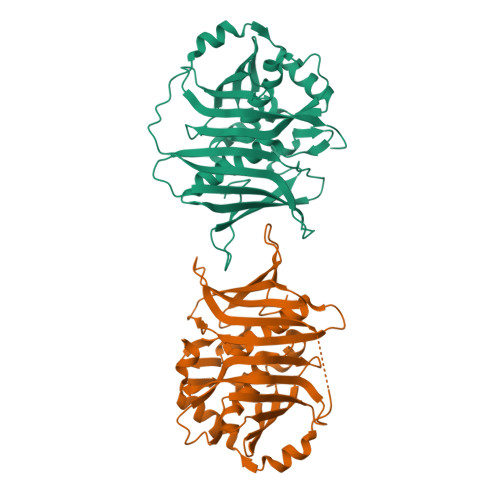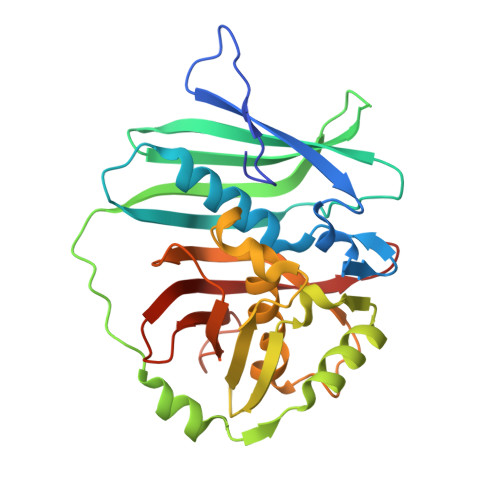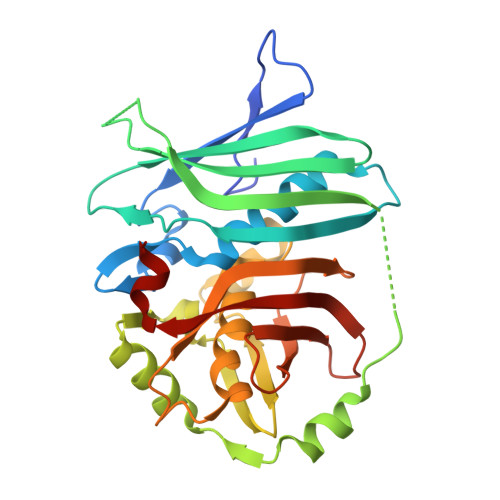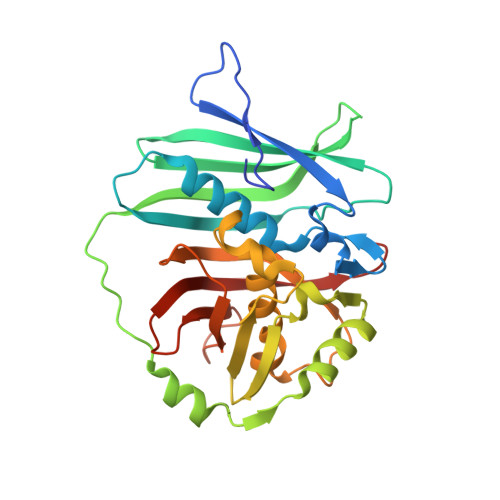Crystal Structures of Dehydratase Domains from the Curacin Polyketide Biosynthetic Pathway.
Akey, D.L., Razelun, J.R., Tehranisa, J., Sherman, D.H., Gerwick, W.H., Smith, J.L.(2010) Structure 18: 94-105
- PubMed: 20152156
- DOI: https://doi.org/10.1016/j.str.2009.10.018
- Primary Citation of Related Structures:
3KG6, 3KG7, 3KG8, 3KG9 - PubMed Abstract:
Modular polyketide synthases (PKS) make novel natural products through a series of preprogrammed chemical steps catalyzed by an assembly line of multidomain modules. Each assembly-line step involves unique extension and modification reactions, resulting in tremendous diversity of polyketide products. Dehydratase domains catalyze formation of an alpha,beta-double bond in the nascent polyketide intermediate. We present crystal structures of the four dehydratase domains from the curacin A PKS. The catalytic residues and substrate binding site reside in a tunnel within a single monomer. The positions of the catalytic residues and shape of the substrate tunnel explain how chirality of the substrate hydroxyl group may determine the configuration of the product double bond. Access to the active site may require opening the substrate tunnel, forming an open trench. The arrangement of monomers within the dimer is consistent among PKS dehydratases and differs from that seen in the related mammalian fatty acid synthases.
Organizational Affiliation:
Life Sciences Institute and Department of Biological Chemistry, University of Michigan, Ann Arbor, MI 48109, USA.


















